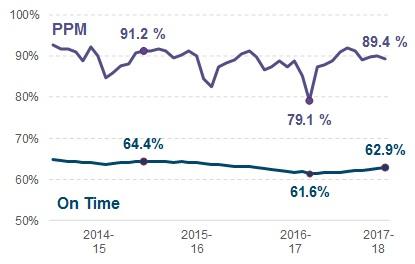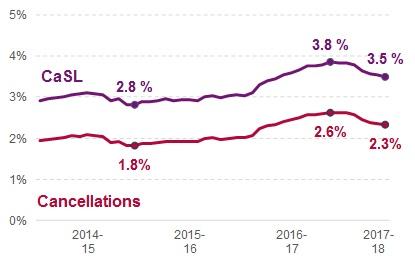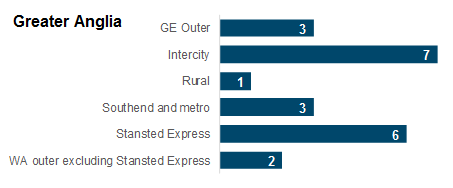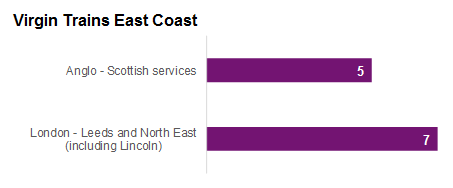Train punctuality and cancellations are important measures of performance. That’s why the rail industry has worked together to develop a different way of reporting train performance, with the aim of better reflecting passengers’ experience.
The new performance measures were launched by the Rail Delivery Group (RDG) in July. We’ve published this information in greater detail, by breaking the information down by train company.
The New vs The Old
There are three new measures – one for punctuality and two for reliability.
Punctuality measures the percentage of recorded stations stops arrived at early or on time.
A recorded station stop is where a train is scheduled to stop at a station that has a timing point. At the moment, not every one of the 2,500+ stations in Great Britain has a timing point, although around 80% of journeys made by passengers are captured.
PPM & On Time, Moving Annual Average
There are a number of things that make on time different to the current punctuality measure, the Public Performance Measure (PPM).
- On Time is the percentage of recorded station stops arrived at within 1 minute of the scheduled arrival time.
- PPM is the percentage of trains arriving at destination within 5 minutes of the scheduled arrival time, or 10 minutes for long distance services
Reliability measures cancellations and the number of severely disrupted days.
Cancellations is the percentage of trains that are cancelled. As well as when a train does not run at all, it is included as a cancellation if it does not run its whole journey length or does not stop at one or more of its planned stations. Depending on how much of the journey is completed, the cancelled train may count as half in the calculation.
CaSL & Cancellations, Moving Annual Average
The current reliability measure is Cancelled and Significant Lateness (CaSL), and again there are some differences between the new and old:
- Cancellations only includes trains that have been cancelled and is completely separate from the punctuality measure.
- CaSL also includes trains that arrive at destination more than 30 minutes late and also counts as having failed PPM.
Severely disrupted days
For a day to count as severely disrupted at a national level, at least 5% of services must be cancelled. At sub-operator level, the level is at least 20% of services.
Because some train companies have more subsidiaries than others, they are likely to end up having more severely disrupted days, as the chart here shows.
Total number of severely disrupted days in the last year
So… Out with the Old?
Not quite yet. We will still monitor Network Rail using PPM and CaSL until the beginning of April 2019. There will also be some train companies whose franchise agreements will include PPM and CaSL targets for some time beyond that.
However, focus on the new performance measures will increase over the next year or so.





